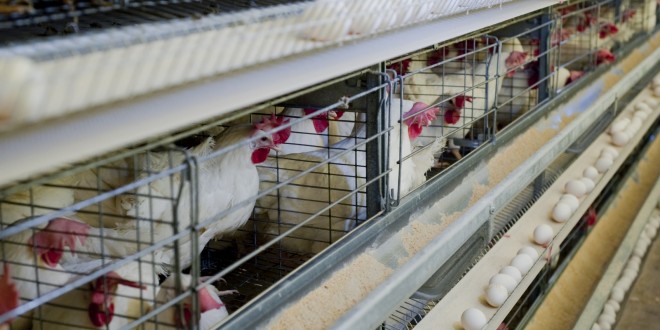While scientists have established a tenuous link between the routine use of antibiotics in livestock agriculture and the rise of antibiotic-resistant bacteria, they can’t make the connection a solid line. That’s not because the data doesn’t hold up, however—it’s because they don’t even have the data, according to a Sept. 3 story in the New York Times.
While it’s possible to collect information about antibiotic use in humans through all the data that goes through the nation’s health care system, there is no similar system for antibiotic use in animals. From the article:
Eighty percent of the antibiotics sold in the United States goes to chicken, pigs, cows and other animals that people eat, yet producers of meat and poultry are not required to report how they use the drugs — which ones, on what types of animal, and in what quantities. This dearth of information makes it difficult to document the precise relationship between routine antibiotic use in animals and antibiotic-resistant infections in people, scientists say.
… scientists say the blank spots in data collection are a serious handicap in taking on powerful producers of poultry and meat who claim the link does not exist.
“It’s like facing off against a major public health crisis with one hand tied behind our backs,” said Keeve Nachman, an environmental health scientist at the Johns Hopkins Center for a Livable Future, which does research on food systems.
The article also explains the seriousness of the problem of antibiotic resistance:
Antibiotics are considered the crown jewels of modern medicine. They have transformed health by stopping infections since they went into broad use after World War II. But many scientists say that their effectiveness is being eroded by indiscriminate use, both to treat infections in people and to encourage growth in chickens, turkeys, cows and pigs.
Whatever the cause, resistant bacteria pose significant public health risks. Routine infections once treated with penicillin pills now require hospitalizations and intravenous drip antibiotics … . Infections from such strains of bacteria are believed to cause thousands of deaths a year.
I have more knowledge than I’d care to about antibiotic resistance: Two elderly family members had to contend with MRSA at the end of their lives. A little boy in our community is dealing with the repeated stressful experiences of getting IV antibiotics to treat his MRSA. And in a much smaller way, I and several of my family members have had to try different antibiotics because the first course did not eliminate the strep throat or infection we were fighting.
I am a huge fan of the wonder that is modern antibiotics. I have often been relieved when we go to the doctor and he prescribes a course of “the pink stuff” to treat my children’s ailments, as I know that as soon as that magic pink liquid takes effect, generally in about 24 hours, the kids will be back to their usual selves.
That’s not what happened 70 years ago. When kids got sick then, recovery from ailments like strep throat or ear infections often took weeks. And when a child got a cut, there was a very real risk that if it got infected it could lead to amputation or even death. The power of antibiotics is not really something we want to mess around with.
But if that’s the case, what are we going to do about it?
Farmers, what do you think?
Should better records be kept on what antibiotics are given
to livestock and in what doses?
How would this work in practice?
Dakotafire will likely do a story on this in the coming months—we’d love to have your input! Please comment below.
 Dakotafire Get your spark here.
Dakotafire Get your spark here.



